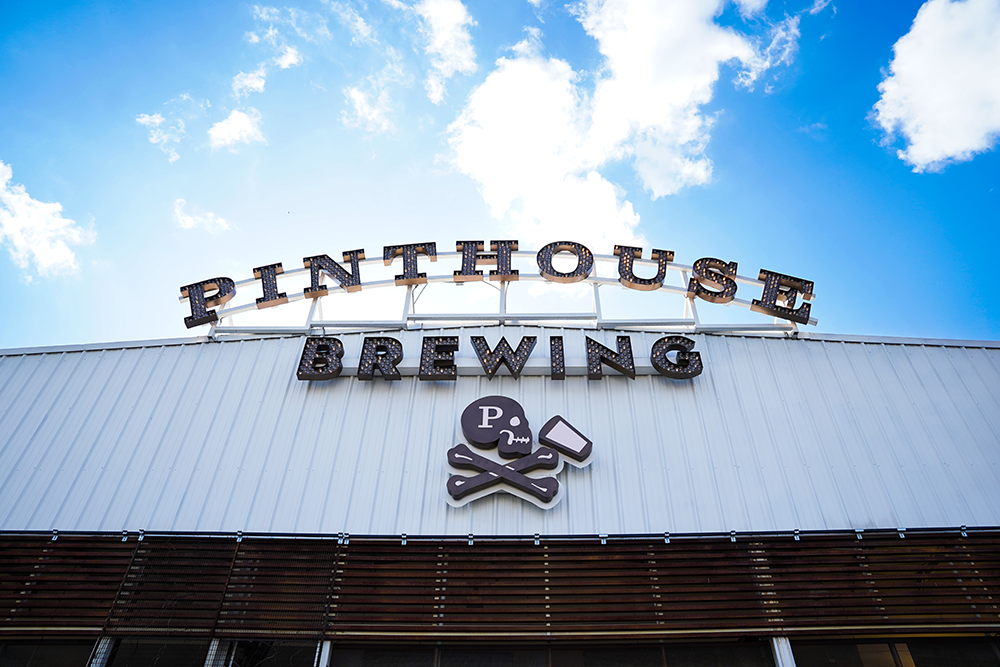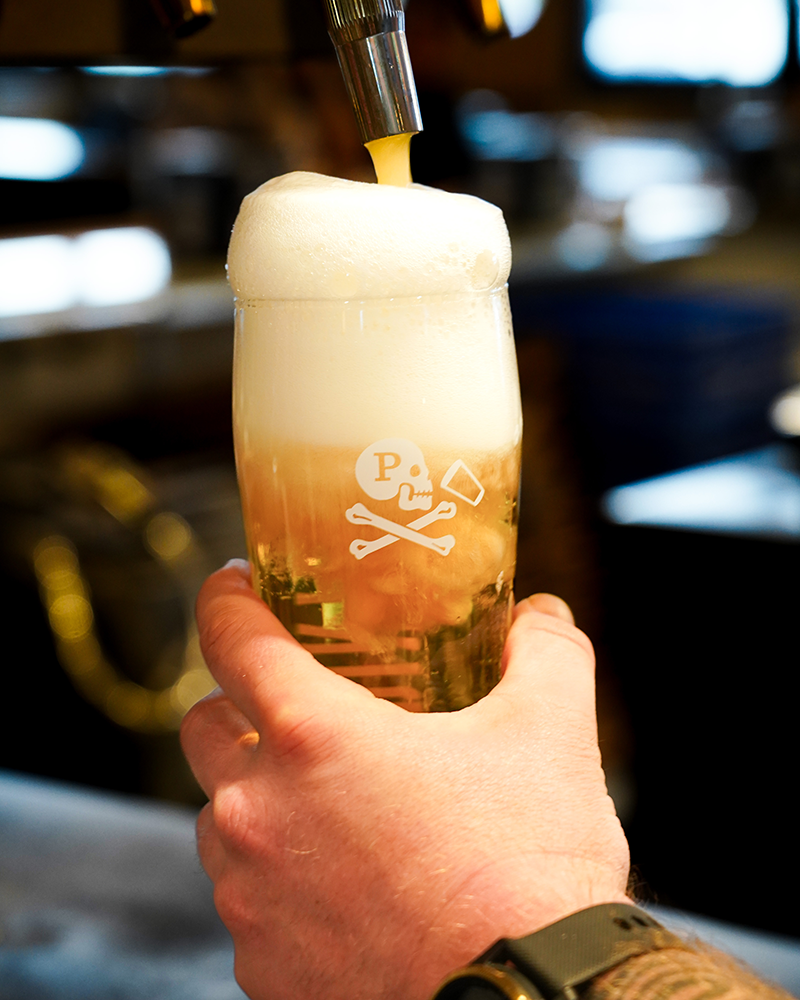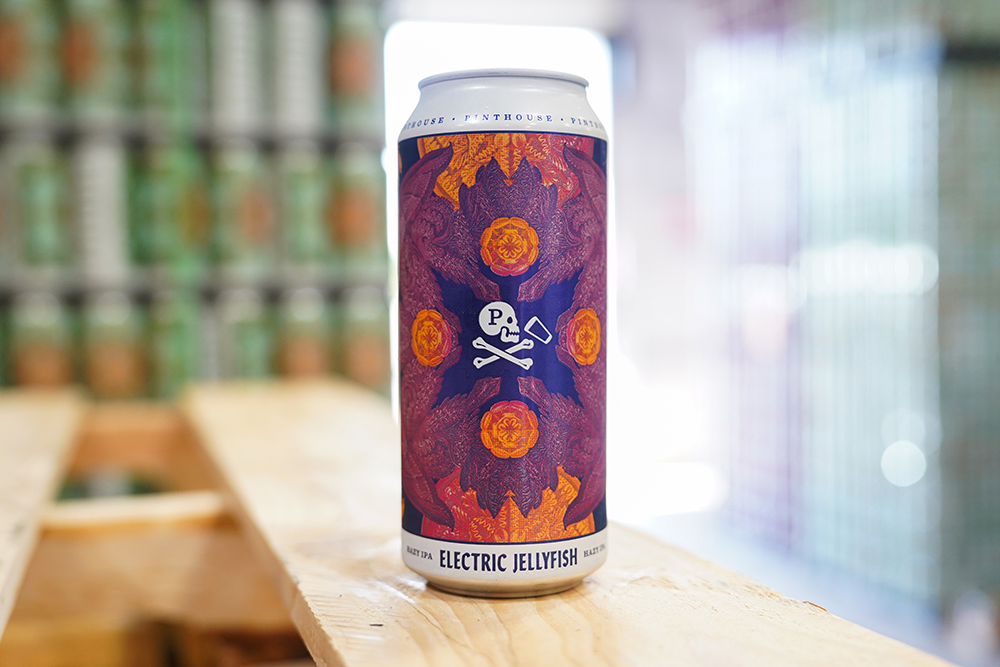
With restrictions of the past few years stripped away, leaving beneficial allowances in their wake, brewpubs are once again able to fully spread their wings. In doing so, they are reaching craft-beer fans and meeting the needs of patrons in new, exciting, and lastingly effective ways. In looking back at statistical data for U.S. brewpubs from 2023, we are profiling four such operations which are thriving behind rock-solid brands, well-calculated business decisions, innovative event programming and more, gleaning insights from key members of those organizations along the way.
A Timeless Combination
Even in a county awash with well over 150 different brewing companies and more than 200 brewery-owned venues, one of San Diego, California’s longest-tenured beer operations is among its most highly revered. That institution, Pizza Port Brewing, opened as a beach-adjacent eatery in 1987, but the installation of an on-site brewing system five years in is what allowed the business to realize its full potential.
More than thirty years later, Pizza Port’s empire has grown to include a half-dozen Southern California venues, including a production brewery from which packaged beer is distributed throughout California, Arizona, and Nevada. The company’s prowess for brewing has been decisively proven care of countless wins at the Great American Beer Festival and World Beer Cup, but it’s the quality reputation garnered via the customer experience at its brewpubs that has earned the business legendary status on a local level.

“We aim to deliver a unique and consistent experience every time a customer visits one of our brewpubs,” says Joe Arguello, Pizza Port’s Senior Marketing Manager. Like any mindful business in the beverage and hospitality space, Arguello and his colleagues pay attention to industry trends, analyze in-house data, and adjust to meet everchanging consumer preferences, but for the most part adhere to an overarching if-it-ain’t-broke policy. “Not that much has changed when it comes to Pizza Port as a whole over the past three decades and that consistency is attributed to our brand morals and identity.”
That brand is a cool, colorful one built around SoCal’s leisurely sun-drenched surfside subculture. It’s a life’s-a-beach concept that resonates as much, if not more, to out-of-towners, making it effective with residents and vacationers alike. Similarly simple yet wildly successful is a food concept that is cost-effective, executable on a large scale, and capable of satisfying almost any demographic.
“Pizza and beer are a timeless combo that appeals to so many,” says Arguello. “Our slice-of-the-day combo, which features a slice of cheese, pepperoni or the daily special with a pint, is a great way for us to showcase creativity on both the brewing and restaurant side of our business.”
Pizza Port’s model is far from rocket science, but as with anything so basic and straightforward, it requires constant attention to detail on all fronts. While best known for its plethora of clean, vibrant West Coast IPAs, the company produces nearly every style of beer across its brewpubs and offers a wealth of guest ales and lagers from notable producers at each of those outposts. It’s all about making sure there is something for everyone, and that no matter the style, the beer is impeccable.
The company further ingratiates itself to the communities it serves by sponsoring fundraising events and forming partnerships with local institutions. On top of doing good and giving back, this allows Pizza Port to reach new consumers while remaining current and relevant with established fans.
Joe’s Insights: Our marketing team focuses on keeping our brand advocates informed about new products, draft offerings or events through social-media and other digital marketing platforms. In-store QR codes and online ordering have proven to be useful tools for further creating new, memorable customer experiences.
Bringing ‘Em Back for More
Pizza Port’s model has inspired a great many, including the founders of Pinthouse Pizza, who thought a quality-driven concept revolving around contemporary pies and hoppy beers of the West Coast ilk would go over well in Austin, Texas. They were right. Since launching a decade ago, Pinthouse has become one of the largest brewpub operations in the country (based on annual barrelage) and boasts a quartet of locations in and around The Lone Start State’s capital city.

“When we first opened, the craft-beer market looked much different than it does today and we benefited from being one of the first brewpubs to market in Austin,” says Ryan Van Biene, Pinthouse’s co-founder and Vice President of Development and Facilities. “I think there was a need, and we were able to step up to be an option for those looking for good food and craft beer in a welcoming and warm environment.”
At the end of the day, that is what brewpubs are all about – atmospheric- and service-driven comfort paired with craveable beer and food. As such, Pinthouse’s management team says they continually look for ways to enhance each of those aspects of their public venues. And though unplanned and challenging, the recent pandemic pushed the company to take on initiatives that would have otherwise felt uncomfortable, to make pivots that ultimately made their organization better.
“COVID-19 forced us to start distributing our cans into the market versus just selling them over the counter at our pubs, as well as fully embrace online ordering. More recently, we’ve benefited by expanding our third-party delivery partnerships,” says Nic Van Biene, Pinthouse’s Vice President of Marketing.
Taking the leap into distribution has worked well for Pinthouse. It’s hazy IPA, Electric Jellyfish, is a ubiquitous calling card around Austin and has helped make an even bigger name for the already popular company. The Van Biene’s credit a workforce that’s driven to be the best for making the most of even the most daunting of ventures.
“Whether it has been opening our first location, COVID or related challenges, the key to Pinthouse’s success has been our constant and collective drive to be the best in class at whatever we do,” says Nic. “We believe our customers and guests see that, experience that, and keep coming back because of it.”
And being a brewpub, they also come back for the beer. But not just flagships. To maximize return business, Pinthouse’s brewing team regularly crafts new beers, often selecting cutting-edge or otherwise popular styles.
“We have remained focused on the flagship brands in our distribution market, both on-premise and off, and focused our attention on innovation and new products in our pubs. This has provided our consumers with a reason to frequent our locations to try the next new and exciting beer, while not creating brand confusion or dilution in the market through a proliferation of SKUs,” says Joe Mohrfied, Pinthouse’s co-founder Vice President of Brewery Operations, Brewery Sales and Distribution. “The core offerings work as a marketing opportunity, a billboard in a sense, to drive the consumer back to our brewpubs to experience our entire breadth of offerings.”
Nic’s Insights: We do our best to show and educate our audience about the quality and love we put into every aspect of Pinthouse. We also really enjoy the personal connections we have with our guests. Those relationships and experiences often lead to personal recommendations from our customers and introduce new people to our brand.
Location, Location, Location
Though home to more than 20 beer companies, Jacksonville, Florida – the largest city by size in the contiguous United States – still has plenty of communities devoid of breweries. Eight years ago, when searching for a site for their passion project, the founders of Wicked Barley Brewing sought to bring beer to one of those underserved neighborhoods, selecting a location ten miles south of downtown on the banks of Goodby’s Creek. Where doubters saw the potential for disaster in the underdeveloped part of town, the Wicked Barley team saw opportunity.
“The brewery is located on a major thoroughfare, surrounded by a few densely populated communities. We also have ten-plus business parks, a marina, public boat ramp and a few dozen neighborhoods that are all within walking distance of the brewery,” says Jen Redman, Wicked Barley’s General Manager. “We evaluated various properties and fell in love with the unique features the location had to offer.”

Those assets included extensive forested outdoor space backing up onto the creek. The team not only developed that land, which is prime seating on an everyday basis and the setting for numerous events, including an Oktoberfest celebration, summer luau, reggae Sundays and Blues, Brews and BBQ festival. They also constructed a 100-foot private boat dock, making Wicked Barley the only brewpub in the country that’s accessible by marine transport.
“In addition to boats, we see jet-skis, kayaks, and even paddle boards,” says Redman. “We are lucky to partner with some great local businesses like Florida Yoga and Paddle to host group events like stand-up paddleboard yoga, sunset paddles and river clean-ups.”
Wicked Barley’s team has certainly made the most of its location, but even with its one-of-a-kind bells and whistles, the basics are where they channel the bulk of their energy. Redman says that quality is key, but so too, is innovation, and they look to apply the latter to their tap list, food menu and day-to-day logistics. “The craft industry is constantly evolving,” she says, “so why can’t we?”
A perusal of the brewpub’s beer list will turn up a variety of styles, ranging from IPAs of all kinds to myriad avant-garde and adjunct-laced beers built around nostalgic flavor profiles. On the culinary side, whimsical appetizers, burgers, brats, and sandwiches prove it doesn’t take a pizza oven to please patrons’ palates. Listening to customer feedback is key, as the menu reflects commentary received; good, bad, and even ugly. Seeking opinions from regulars while going the extra mile in setting up engaging events and one-of-a-kind features to attract new clientele have been key to Wicked Barley proving past doubters wrong.
“A successful business is a reflection of the community that surrounds it,” says Redman. “We pride ourselves on providing a clean, unique, and family-friendly establishment that has served as a gathering place for many of life’s special moments, happy hours, school-spirit nights, and so much more. In return, we get the satisfaction of knowing we are part of so many memories for years to come.”
Jen’s Insights: You must be willing to be flexible and receptive to change. With the rise of AI and ever-changing social-media algorithms, we are constantly trying to stay on trend. While technological advances are on the rise, we still see success in the old-school “word of mouth”. A guest that enjoys their experience is likely to come back and tell friends about their visit.
Unwavering Support
“Our customer base has been spectacular. We have the best customers in the industry coming through our doors. They’ve become our family,” says Trap Door Brewing co-owner Michael Parsons. “I recently got married and my officiant was a friend I met at Trap Door, as was one of my groomsmen. A lot of first dates, engagements and kids’ birthdays happen at our place. We just love the community.”
It’s no wonder. Not only has the Vancouver, Washington brewpub been packing in patrons thirsting for award-winning hazy IPAs since opening in 2017 (Parsons recalls they were one of only a handful of breweries in the Pacific Northwest to brew them when Trap Door debuted), its regulars were key to carrying the business through the pandemic.

“The day after shutdowns, we had all our beer online for pick-up sales. We were even delivering the beer to our customers’ doors,” says Parsons. “When we were allowed to have outdoor seating, we installed a large patio cover with heat so we could get through the winter months. Our customers showed up with puffy jackets, gloves, scarves, and beanies, sat on our patio and drank cold beer. It was awesome and we felt extremely fortunate.”
That level of support has continued as Trap Door and hospitality operations nationwide grapple with inflation, rising costs of goods, increasing wages and other expenses. Like many others, Parsons has had to raise prices, and continues to marvel at his customers’ unwavering support. He says he realizes they don’t need to spend their money at his establishment, and that he, in turn, strives to repay their loyalty by creating a consistent, safe, fun place for them to gather. That first adjective is easier said than accomplished, particularly in an industry where there is so much fluctuation and so many passing fancies.
“We’ve been doing this a while now and what we’ve noticed is that some trends go out faster than they came in. We tried brewing for the trends, but often weren’t successful,” says Parsons. “For a while folks wanted nothing but one-off hazy beers, smoothie beers, kettle sours and pastry stouts. West Coast IPAs and lagers weren’t the ‘hot’ item. We rode that rollercoaster for a while, then decided to stick to what we do: hoppy beers, solid lagers, West Coast IPAs, and pale ales.”
Staying true to themselves has worked. Last year, in need of greater capacity, Trap Door expanded, opening a kitchen-equipped production brewery in nearby Washougal, steps from the Columbia River.
“We are proud of this space. A lot of work, blood, sweat, and tears went into it,” says Parsons before tacking on a not-so-surprising bit of info. “The community has once again received us with open arms.”
Michael’s Insights: We have hired a local media team, and they’ve been great in helping steer us in the right direction. Taproom events are important. We’ve had great success with trivia and bingo, and really enjoyed those experiences. We also have a beer club and we’ve had members for eight years running. They love it so much that they don’t want to give up their spots.
This article originally appeared in the May/June 2024 edition of The New Brewer Magazine, a publication of industry trade organization, the Brewers Association

